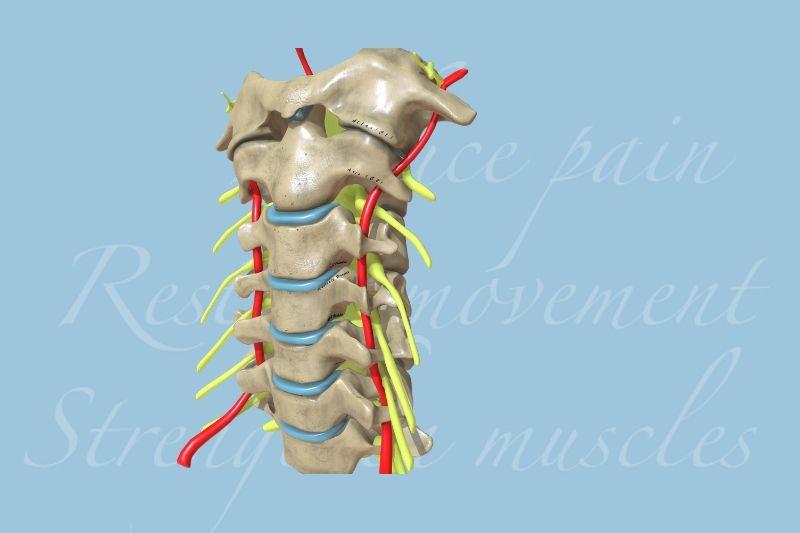
What is a Wry Neck
A wry neck can affect anyone, at any age, but the good news is that with the right treatment, wry neck can be completely resolved.
A wry neck is a common condition characterized by onset of pain and stiffness in the neck. Patients with a wry neck typically experience severe one sided sharp neck pain which is often accompanied by spasm of the surrounding neck muscles.
There is usually an inability to turn the head to the painful side and often a postural deformity due to pain. The postural deformity is usually with the head held away from the side of pain and unable to correct this due to a protective muscle spasm and pain.
Looking for help?- DOWNLOAD our GUIDE on Managing Neck Pain
There are 2 most common types of wry neck
Acute wry neck - jammed facet joints - and
Discogenic wry neck when there is an irritated Cervical disc
Facet joint cause
There are two facet joints on either side of the back of each vertebra in the neck. These joints provide stability, while also enabling neck movements such as turning or nodding the head.
Occasionally the facet joints can become either stiff through traumatic injury or arthritis or simply get stuck at an end range of movement. Facet joints are usually an acute presentation
It is thought that these joints in the neck become jammed, which results in pain and the muscle spasm. This may result from a minor sudden quick movement or simply sleeping with the neck in an unusual position and waking with pain in the morning. In this case it may be due to sleeping in a prolonged poor posture either side lying, on your back with too many pillows or on your stomach with your neck turned excessively.
Sudden facet joint wry neck is most common in younger populations, ranging from young children to people in their thirties. Older facet wry neck sufferers tend to have a more gradual onset with the facet joints becoming "rusty" over time.
Signs and Symptoms of Facet Wry Neck
- Pain – generally located in the middle or side of the neck that is affected. The onset of pain is usually sudden. The pain experienced does not extend beyond the shoulder joint. The upper neck joints can often be implicated.
- Loss of Movement – your neck is generally fixed in an abnormal position – most commonly flexed forward and rotated away from the side of pain. All movements aggravate the pain, as the joint is fixed and movement triggers irritation to the joint and thus pain.
- Muscle Spasm – this is a tightening of the associated neck muscles that further limit movement with protective spasm
Discogenic
Another cause of an acute wry neck can be a small disc bulge where the disc usually pressures backwards or sideways. This can also cause some nerve irritation/ compression and potentially give symptoms radiating down into the arm, such as tingling or numbness. Discogenic neck pain may take a little longer to resolve, but also responds well to physiotherapy treatment. It is usually in an older age group and may occur the next morning after sustained postures the day or night before.
Symptoms of a discogenic wry neck include local neck pain with or without shoulder/ shoulder blade pain. It is often hard to find a comfortable position, although you can usually manage some rotation and side bending away, and generally reach midline with movements. The mid to low neck is most often most painful and treatment will target this area. It is most usually the lower discs that are involved. Prior to onset, patients will often have noticed increasing stiffness or limitation of movement for days or weeks.
If the pain is there on waking before you start moving Discs are often suspected but if pain occurs only with movement after waking, the facet joints may be the culprit.
Without treatment, discogenic wry neck may progress to nerve root irritation or compression. Overall this will respond slower to treatment than acute wry neck, and may require a lot more and regular treatment. It can be very debilitating and intense radiating pain if nerves are compromised.
It is important to seek Physiotherapy help with a wry neck as the purpose of treatment can differ according to the structure involved. Facet joints need movement in conjunction with release of muscle spasm while Discogenic need unloading of pain sensitive structures with desensitising neural irritation. Both need appropriate exercises for management and prevention of recurrences.
Wry Neck Physio Treatment Options
- Manual therapy techniques to free up your joints, to ensure the neck is able to move freely again
- Soft tissue release if spasm
- Dry needling to relieve pain and muscle spasm to allow improved movement
- Kinesio and unloading taping to support and offload tight structures
- Heat therapy; we supply re-usable wheat heat packs here to use at home
- Gentle neck stretches to ensure there is no permanent muscular shortening
- Postural checks, adjustment and advice to ensure your neck pain does not persist or re-occur
- Deep neck muscle strengthening exercises to strengthen the ‘core’ of your neck for long term support
- Ergonomic advice to ensure you are in the correct position at work
- Advice, education and exercises to maintain and improve range
Discogenic wry necks often have a degenerative component and are prone to flare ups. Postural advice and preventative exercises are important as is the need to complete your Physios treatment plan to achieve a good long term outcome.
At Hindmarsh and Fitzroy Physiotherapy we are passionate about providing advice and education to help people manage their necks. For help with this click the link below for our free downloadable E-Book on managing and preventing neck pain
Free Neck Pain GuideBlog Archive
Contact Us
Hindmarsh Physiotherapy & Sports Injury Clinic
281 Port Road
HINDMARSH SA 5007
Appointments
